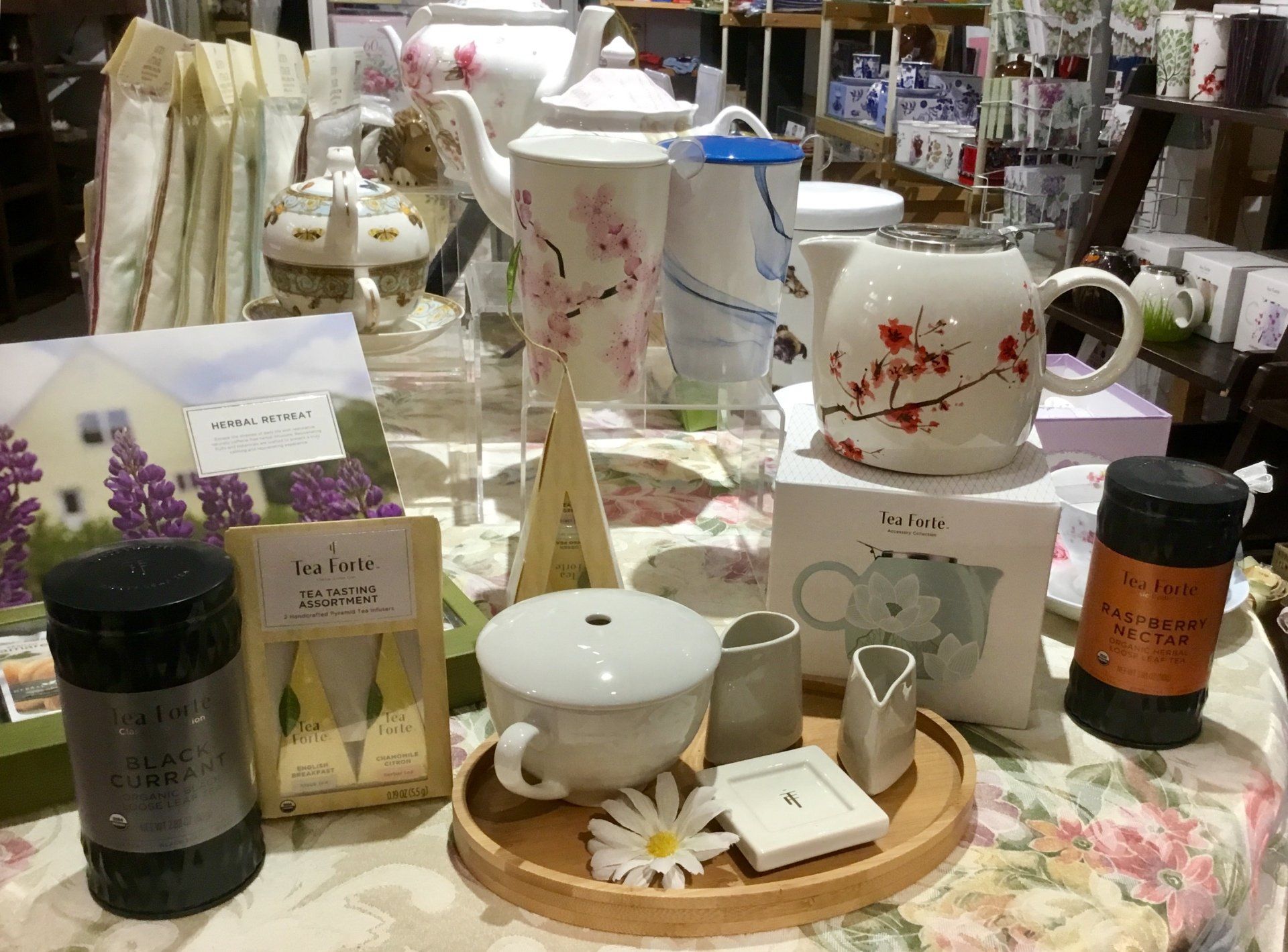Fine British Teas
No country is more proud of its wide selection of high-quality teas than England. When you shop at The English Shop, you can enjoy the aromatic enchantment of traditional and unique English imported teas. Our friendly staff will be happy to help you make a selection from our wide variety of English teas! We know the choice can be overwhelming!
The Largest Selection of Imported British Teas in Missouri

The Golden Rules of Tea Making
Always use good quality tea. Always use freshly drawn cold water. Warm the pot.
If using tea bags, use one bag per person. If using leaf tea, put in one heaping teaspoon per person, plus “one for the pot.” When the water is at boiling point pour into the teapot and leave to infuse for 3-5 minutes. Tea steeped too long releases too much tannin and tastes bitter. Remove tea leaves or tea bag to
stop the infusion. Stir and pour. Add milk first or last depending on taste. If you like, add sugar.
Loose Tea
- Taylors & Harrogate Tin & Box
- Twining’s Tin
- PG Tips Bag
- Yorkshire Gold Bag
- Yorkshire Red Bag
- Ahmad
- Typhoo Box
- The Metropolitan Tea Co. Bag
- Tea Forte Tins
- Davidson’s Bag
High & Low Teas
High Tea is often a misnomer. Most people refer to afternoon tea as high tea because they think it sounds regal and lofty, when in all actuality, high tea, or "meat tea" is dinner. High tea, in Britain, at any rate, tends to be on the heavier side. Afternoon tea (because it was usually taken in the late afternoon) is also called "low tea" because it was usually taken in a sitting room or withdrawing room where low tables (like a coffee table) were placed near sofas or chairs generally in a large withdrawing room.
There are three basic types of Afternoon, or Low Tea:
- Cream Tea - Tea, scones, jam and cream
- Light Tea - Tea, scones and sweets
- Full Tea - Tea, savories, scones, sweets and dessert
In England, the traditional time for tea was four or five o'clock and no one stayed after seven o'clock. Most tea rooms today serve tea from three to five o'clock. The menu has also changed from tea, bread, butter and cakes, to include three particular courses served specifically in this order:
- Savories - Tiny sandwiches or appetizers
- Scones - Served with jam and Devonshire or clotted cream
- Pastries - Cakes, cookies, shortbread and sweets

The Only English Specialty
Shop in Missouri
You will love visiting our locally owned and operated store in Historic Downtown St. Charles. Visit or call us today
for full details about our English teas.
- PG Tips Black Tea 40’s 80’s 160’s Decaf, Gold, Extra Strong
- Number One tea in England for over 80 years
- Yorkshire Tea Gold or Red, Black Tea 40’s 80’s Decaf (Our second best selling tea at the shop)
- Ty-phoo Black Tea 40’s 80’s Decaf
- Welsh Brew Black Tea 40’s
- Bewley’s Irish Black Tea 80’s Original, Gold, Decaf,
- Irish Breakfast, Dublin Morning
- Barry’s Irish Black Tea 80’s Classic, Gold Blend, Irish Breakfast
- Glengettie Black Tea From Wales 80’s
- Builder’s Black Tea 40’s Brews to full strength in only 20-30 seconds, not the usual 5 minute wait.
- Lyon’s Black Tea 80’s
- Lifeboat Black Tea 80’s
- The London Tea Co. Black Tea
- London Cuppa Black Tea
- Taylors of Harrogate 20’s 50’s Black, Green, Flavored
- Twining’s 20’s Black, Green, Flavored
- Ahmad 20’s Black, Green, Flavored
- Rington’s English Black or Green Tea 20’s 50’s rich tasting, full bodied
- Edinburgh Tea Co. Black 50’s
Simpson & Vail Literary Teas
Tea Forte
- Wonderful gift selection boxes


